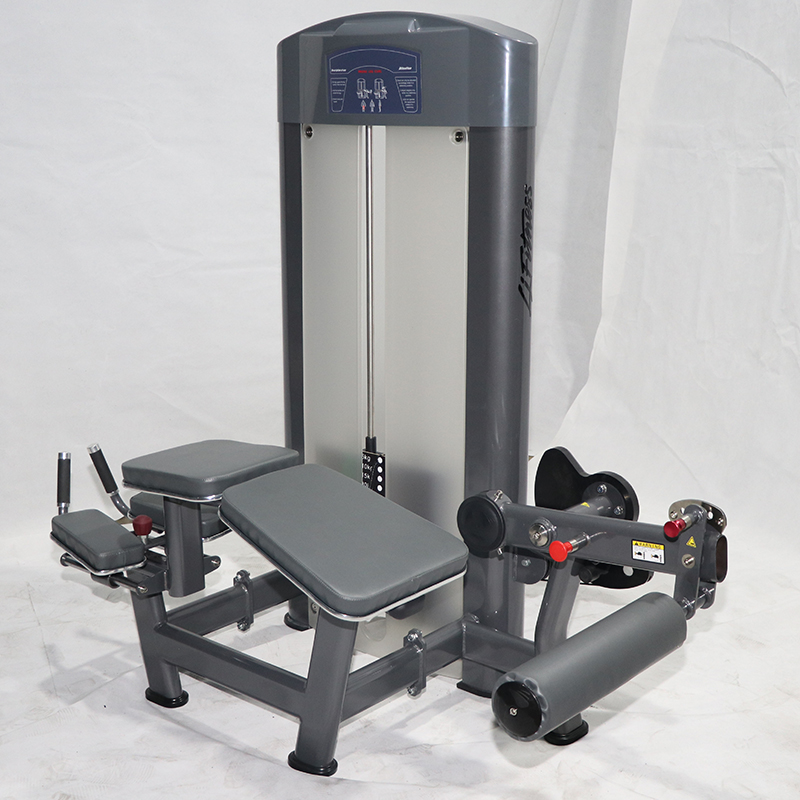What muscles does the prone leg curl gym equipment mainly exercise?
The main muscles trained by the prone leg curl strength machine include gastrocnemius, adductor major, biceps femoris, quadriceps femoris, etc.
The specific steps for using the prone leg curl machine are as follows:
The prone leg trainer is a common fitness equipment used to train the muscles behind the thighs.
1. Adjust the position of the seat and leg rest: Firstly, adjust the height of the seat according to your height and body shape, so that your feet can comfortably rest on the leg rest, and the angle between your thighs and torso should also be appropriate.
2. Maintain the correct posture: Lie down on the prone leg trainer, push your feet up to the position of the leg guards, and make sure your thighs are at a right angle to your torso. Both hands can grip the armrest to maintain body stability.
3. Conduct training exercises: Start the prone leg training by forcefully retracting both feet and pulling the leg brace towards the body until the maximum flexion is reached at the junction of the thighs and calves. During this process, pay attention to keeping your breath steady and not holding your breath. Maintain the position of maximum flexion for a period of time, then slowly relax and return both feet to the starting position. During this process, it is important to maintain stable movements and avoid excessive speed or force.
4. Moderate training load: When using a prone leg trainer, the appropriate training load should be selected based on one's own training level and physical condition.
5. Control movement speed: When performing prone leg training, ensure the speed of control movements. Avoid exerting too much force or too quickly to avoid causing excessive pressure on muscles and joints. It is important to maintain controlled and smooth movements at all times, ensuring that muscles can exert sufficient force and maintain a certain amount of time at the peak of each movement.
6. Pay attention to safety and comfort: When performing prone leg training, pay attention to your own safety and comfort. If you feel discomfort or pain, you should immediately stop training.
7. Perform appropriate warm-up and stretching exercises before and after training to reduce the risk of muscle strains and other injuries. At the same time, keep the training equipment clean and maintained to ensure its long-term service life.




















